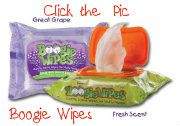Get some coupons!
• The Sunday newspaper is a great source of coupons. Buy the newspaper with the largest circulation in order to get the best coupons. You can sometimes get them cheaper by buying a double pack.
• Ask your friends and family for coupons. If they get a newspaper but usually throw out the coupons then they’ll probably be happy to give them to you.
• Check the store. There are many varieties of coupons that you can find in the store. Peelies, blinkies, hangtags.
Organize your coupons!
• Envelopes. You can start by clipping and putting them all in an envelope or check file. But, once you’ve been couponing for a few weeks you will need something bigger.
• Coupon Binder. With this method you would clip all of your coupons and file them in baseball card holders in a three-ring binder. With this method you can carry your binder to the store and have all your coupons with you while you shop.
Know your store’s coupon policy!
Make a plan!
• Weekly Ads. Read the weekly store ads to see what is on sale and which stores have the best prices on the items you need. If you don’t get the weekly ads delivered you can usually view them on the store’s website.
• Coupon Matchups. See if you can match coupons to the sale items to get an even better deal! Some websites do this for you.
• Pricematch. Some stores, like Walmart, will pricematch. This means that if grapes are on sale for 99¢/lb. at Kroger, you can take the ad to Walmart and at checkout tell the cashier that you would like to pricematch the grapes. Show them the ad and they will sell you the grapes for 99¢/lb. versus their higher price.
• Make a List! Don’t go to the store without a list. Lists remind you what you came for and keep you from buying items you don’t need. I never ever go to the store without a list anymore!
• Rainchecks. If your store is out of the sale item, get a raincheck! Go to customer service and ask for a raincheck for the item you wanted. They will fill out a piece of paper with the item details and price. Then you can come back another day (usually no more than 30 days) and buy that item at the sale price by giving the cashier the raincheck. This also gives you more time to gather coupons for the item! You can still use a coupon if you are using a raincheck.
Don’t be fooled!
• 10/$10 promotions. You do not have to buy 10 items to get the $1 price! The only exception to this rule is if the ad states that you must! Those times are rare and are usually for items that are buy x get y free, final price 2/$5, etc.
• Rock-bottom prices. Don’t go out and use your coupon immediately! If you use that 25¢ off toilet paper right away when it’s not on sale you aren’t reaching your saving potential! Wait until toilet paper goes on sale for $1 then use the coupon. If your store triples coupons then you could get the toilet paper for only 25¢! Matching sales with coupons is getting a great price. Combining sales plus coupons plus another promotion (rebates, double coupons, store coupons) is getting the best price!
• “One per Purchase.” I’ve heard this so many times! Most coupons say “one coupon per purchase” somewhere in the fine print. Cashiers will try to tell you that that means you can only use one coupon per transaction/day. This is NOT true! One per purchase means that you can only use one coupon per item purchased! So if you are buying 10 items and have 10 coupons then you can use them all!
• Leave the kids at home! Shopping with kids will distract you and cause you to buy items not on your list!
• Make a Pricebook. Start paying attention to prices and keep a list of items you regularly buy with the best and regular prices for those items. This will help you when you see that canned veggies are on “sale” for 10/$10 but the regular price is actually 99¢!
• Limits. Stores will sometimes put limits on the item to make you think it’s a great price! If cereal is just on sale 2/$4 you might not even notice it. But if it’s on sale 2/$4, limit 2! Then you will likely think it’s a great price since they had to put a limit on it!
• “Bigger is better.” The cost per unit of the bigger box of cereal may be less than the smaller one but with coupons and sales the smaller box is likely a better deal.
• Watch the cashier. When checking out pay close attention to the price screen to make sure everything rings up at the correct price. Also, make sure that the cashier scans all of your coupons. Coupons sometimes stick together or get dropped or the cashier will scan the coupon but not realize that it didn’t go through. Kindly point out that they missed one and they will correct it.
• Check your receipt. BEFORE leaving the store look over your receipt to make sure everything rang up correctly and all of your coupons were scanned. If there is a problem take it to customer service immediately so they can fix it. If you leave the store and come back at another time then it might not be fixable. If the cashier missed a coupon and you notice right away it’s easy to see the mistake. But, if you come back later after several other coupons have been added to the cashier’s stack or the stack is gone then there is no way to prove that they missed a coupon.
Build your stockpile!
• Start slowly. Don’t buy a ton of everything as soon as you get started or you will blow your budget! A stockpile takes time. Set aside a part of your weekly grocery money for stockpiling and do what you can with what you have.
• Buy for the future. If an item goes on sale for a great price (or free!) then buy more than you need for just the week. Typically sales go in 12 week cycles so you only need to buy enough for 12 weeks. So, if you eat 1 box of cereal per week then when you find cereal at a rock-bottom price then you should buy 12 boxes. This way you have cheap cereal that will last you until you can buy it at a rock-bottom price again.
• Know how much you use. Start paying attention to how many bottles of shampoo, packs of diapers, boxes of cereal, etc. you use. This will help you to have a better idea of how much you should buy and to not go overboard! If you only eat 1 box of cereal a month then there is really no need to buy more than a few boxes or they will just go to waste.
skip to main |
skip to sidebar


Free Template By:

But, I Wuv Winn Dixie!
Facebook Badge
Grab my Button!
http://i361.photobucket.com/albums/oo57/alwaysrootn/Blog/free125-Ozm0.png
Search This Blog
Blog Archive
Total Pageviews

I am a Purex Insider!















